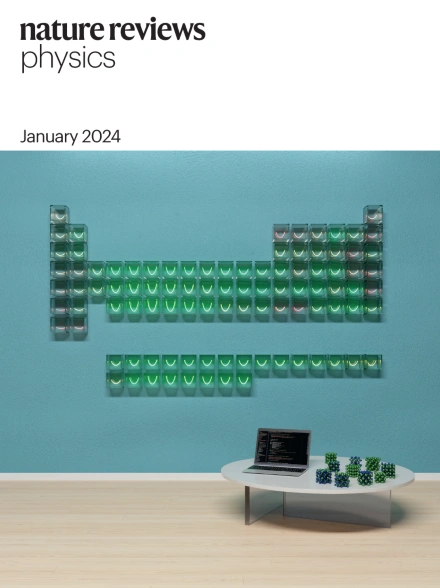下降的摩擦
IF 39.5
1区 物理与天体物理
Q1 PHYSICS, APPLIED
引用次数: 0
摘要
对润湿现象的定量研究已经有200多年的历史,但仍有许多基本问题没有被理解。例如,水滴在斜面上滑动的速度是无法预测的。水滴在表面上滑动时,会受到阻力。我们称之为阻力下降摩擦。能量如何以及在哪里在滑动下降中耗散仍然存在争议。特别是对于最常见的液体,水,在新的物理、制备和理论方法的发展的推动下,对润湿的理解已经取得了相当大的进步。水是一种特殊的液体,因为它的极性、易于形成氢键、自电离成OH -和h30 +、低粘度和高表面张力。近年来,由于适应、自发静电电荷和弹性体变形引起的水-表面相互作用已被确定为增加液滴摩擦的重要过程。即使在看似光滑、均匀和坚硬的表面上,它们也可能造成跌落摩擦。滑动滴的动态润湿,特别是水的动态润湿,仍然知之甚少。新的实验技术表明,除了粘性耗散,其他的能量耗散机制,如适应、静电充电和变形也可以显著贡献并影响液滴的运动。本文章由计算机程序翻译,如有差异,请以英文原文为准。

Drop friction
Wetting phenomena have been studied quantitatively for more than 200 years, but there remain many fundamental questions that are not understood. For example, the speed of a water drop sliding down an inclined plane cannot be predicted. A drop that slides down a surface experiences a resistance. We call this resistance drop friction. It is still debated how and where energy is dissipated in a sliding drop. Particularly for the most common liquid, water, there have been considerable advances in the understanding of wetting, driven by the development of new physical, preparative and theoretical methods. Water is a special liquid, owing to its polar nature, its tendency to form hydrogen bonds, the self-ionization into OH− and H3O+, its low viscosity and its high surface tension. In recent years, water–surface interactions due to adaptation, spontaneous electrostatic charging and deformation on elastomers have been identified as important processes that increase drop friction. They may be responsible for drop friction even on seemingly smooth, homogeneous and rigid surfaces. The dynamic wetting of sliding drops, particularly of water, remains poorly understood. New experimental techniques have shown that, in addition to viscous dissipation, other energy dissipation mechanisms such as adaptation, electrostatic charging and deformation can contribute significantly and affect the motion of the drops.
求助全文
通过发布文献求助,成功后即可免费获取论文全文。
去求助
来源期刊

Nature Reviews Physics
Multiple-
CiteScore
47.80
自引率
0.50%
发文量
122
期刊介绍:
Nature Reviews Physics is an online-only reviews journal, part of the Nature Reviews portfolio of journals. It publishes high-quality technical reference, review, and commentary articles in all areas of fundamental and applied physics. The journal offers a range of content types, including Reviews, Perspectives, Roadmaps, Technical Reviews, Expert Recommendations, Comments, Editorials, Research Highlights, Features, and News & Views, which cover significant advances in the field and topical issues. Nature Reviews Physics is published monthly from January 2019 and does not have external, academic editors. Instead, all editorial decisions are made by a dedicated team of full-time professional editors.
 求助内容:
求助内容: 应助结果提醒方式:
应助结果提醒方式:


